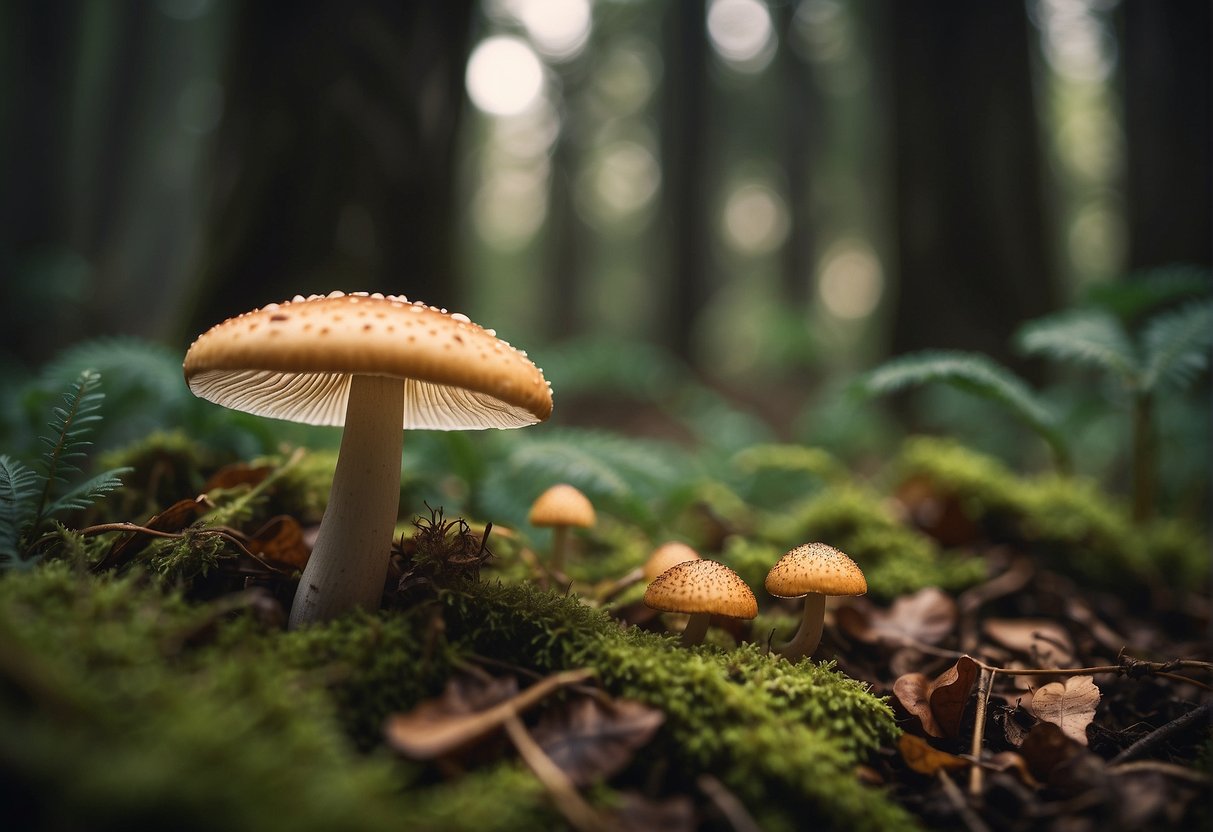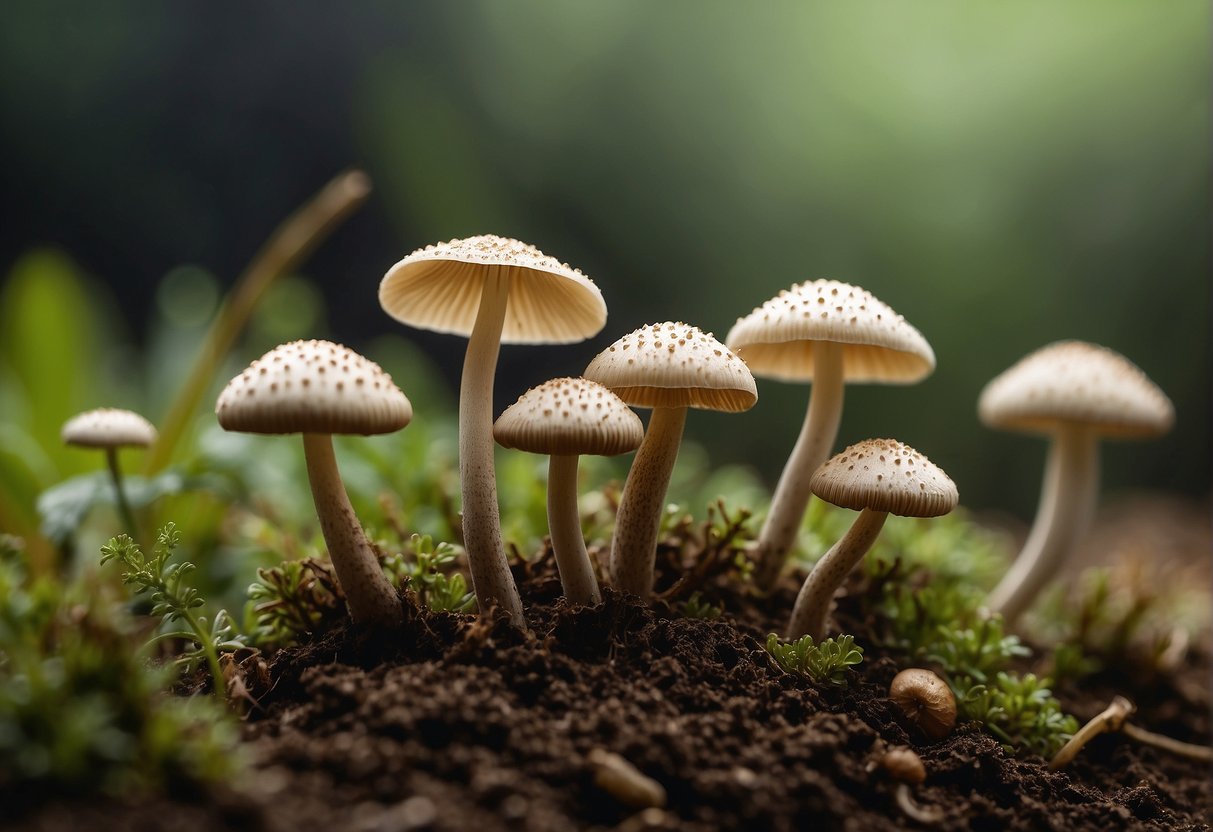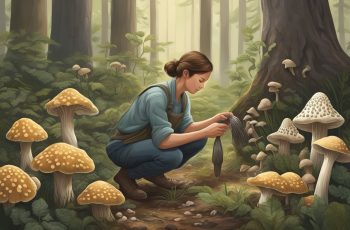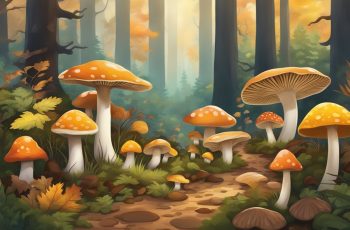Harvesting mushrooms is both a skill and an art, one that outdoor enthusiasts, like yourself, may find rewarding on multiple levels. Whether you are foraging in the wild or cultivating your own at home, knowing when and how to harvest mushrooms can greatly influence the quality and taste of your bounty. Identifying the right stage of mushroom growth is crucial; for example, shiitake mushrooms are best harvested when the caps are slightly curled under and the gills are exposed but not fully. This signifies that the mushrooms are mature and have developed their full flavor.

When it comes to the actual picking, the technique is as important as timing. Using a gentle twist-and-pull method can help to prevent damage to the mushroom substrate below, ensuring further growth. Harvesting mushrooms isn’t just about removing them from the ground or substrate; it’s about maintaining the ecosystem for future yields. Post-harvest, handling your mushrooms with care during cleaning and storage is essential to preserve their integrity and extend shelf life. Mushrooms should be stored in a cool, dry place and consumed relatively quickly to enjoy their best quality.
Key Takeaways
- The optimal harvest time depends on mushroom maturity and type.
- Gentle harvesting methods protect the mushrooms and their growing environment.
- Proper post-harvest care is key to maintaining mushroom quality.
Understanding Mushroom Growth Cycles

To fully appreciate the nuances of mushroom cultivation, you need to grasp the critical stages of their development, from spores to fruiting bodies, and how environmental factors influence growth.
Life Cycle of Mushrooms
Mushrooms begin their life as spores that are too tiny to see without magnification. Under the right conditions, these spores germinate and develop into a network of filamentous cells called mycelium. This mycelium expands through the substrate—a nourishing material made from various agricultural waste products. As the mycelium network matures, it then enters a phase called pinning, where small, primordial mushroom forms appear. These eventually grow into the fruiting body, the part of the mushroom that you see and harvest. Mushrooms generally produce several flushes, or groups, of fruiting bodies, each emerging in waves before the mycelium exhausts the nutrients in the substrate.
Optimal Conditions for Mushroom Cultivation
For successful mushroom cultivation, you must carefully control the environmental conditions. Your mushrooms will need a substrate rich in nutrients and moisture. Maintaining high levels of humidity and ensuring sufficient fresh air exchange is crucial for healthy mycelium growth and subsequent fruiting. The precise conditions like temperature and humidity can vary depending on the species you’re cultivating. However, as a general rule, you will aim to simulate the natural growing conditions of the mushrooms to encourage a bountiful harvest.
Harvesting Techniques for Various Mushrooms
When you’re ready to harvest mushrooms, knowing the correct technique is crucial. Different types of mushrooms require different approaches to ensure their quality and vitality after picking.
Harvesting Edible Varieties
Oyster Mushrooms: For oyster mushrooms, you want to cut them at the base using a mushroom knife. This method helps prevent damage to the mycelium and allows for regrowth. Harvest these when the edges of the cap still curl downwards.
-
Shiitake: These mushrooms are best pulled off, not cut. Twist them gently from the substrate. Harvest Shiitake before the caps fully unfurl.
-
Chanterelles: These are delicate; use a knife to cut them just above the ground level. Harvesting chanterelles efficiently requires a gentle touch to preserve the surrounding environment.
Harvesting Psilocybin Mushrooms
Magic Mushrooms (Psilocybe Cubensis): When harvesting these, wear rubber gloves to avoid contamination. It’s best to harvest magic mushrooms right before the veil underneath the cap breaks. Gently pulling them out is often advised to avoid disturbing the substrate.
- Growing Magic Mushrooms: While cultivating, make sure your environment is as sterile as possible to prevent any unwanted fungi from competing with your psilocybin producers.
Remember, no matter the mushroom, avoid excessive force to protect the growing area for future flushes. With each harvest, you’re not just reaping crops; you’re ensuring another chance at growth.
Post-Harvest Handling and Storage
After you’ve successfully grown and harvested your mushrooms, it’s crucial to handle and store them properly to maintain their quality. Keeping the right conditions can help maximize shelf life and keep those mushrooms in top shape for consumption or sale.
Cleaning and Preparing Mushrooms
You need to clean your mushrooms without soaking them, as they absorb water quickly, which can affect their texture and flavor. Gently brush off any dirt using a soft brush or cloth. If you must rinse them, do it quickly and pat them dry immediately. A sharp knife or scissors can be used to trim off any parts of the veil that have not broken, or to remove any remnants of compost from the caps.
- Yield: Handle your mushrooms gently to avoid bruising, which can reduce the overall yield you can offer.
- Size: Harvest mushrooms while they’re still small to medium in size to ensure a firmer texture.
- Texture: A clean mushroom should have a smooth texture, free from excess debris.
Drying and Preserving Techniques
Drying mushrooms is an effective way to preserve their flavor and potency. To dry them properly, spread the mushrooms out on a clean surface in a well-ventilated area away from direct sunlight. A dehydrator can be used for more consistent results, ensuring that the mushrooms are dried uniformly at low temperatures.
- Texture: Proper drying should leave the mushrooms crisp, preserving texture for later rehydration.
- Flavor: Dried mushrooms retain an intense flavor, making it a worthwhile preservation method.
Make sure your mushrooms are thoroughly dried before storing them in airtight containers to protect against moisture and preserve their quality.
Best Practices and Common Mistakes
Before diving into the heart of mushroom harvesting, understand that knowing when and how to harvest can greatly affect the potency and longevity of your mushrooms. It’s not just about picking them; it’s about preserving their inherent qualities and being mindful of the common pitfalls along the way.
Maintaining Mushroom Health and Potency
Best practice for harvesting mushrooms, especially those like shiitake and reishi that grow on trees, is to use a sharp knife or scissors. The rule of thumb here is to avoid pulling them directly from the substrate to prevent damage that could compromise the entire cultivation. Timing is critical; harvesting at the convex stage, when the caps are still slightly curled down, often means the mushrooms are at peak freshness and potency.
- Rule of Thumb: Never yank mushrooms from their growing medium.
- Best Practice: Harvest using a sharp knife or scissors.
- Timing: Check for the slight concave curvature in mushroom caps as an indicator of peak harvesting time.
The active principle of a mushroom, or the substance that offers health benefits, is highly dependent on these practices. Also, be aware that some mushrooms can upset your stomach; only harvest those you are knowledgeable about.
Identifying and Addressing Common Issues
Becoming familiar with common issues can save you from the disappointment of a ruined crop. An important issue often neglected is moisture control. Mushrooms are quite susceptible to both dehydration and over-saturation. Make sure your harvesting tools are clean and dry to prevent the spread of contaminants.
- Indicator of Over-hydration: Mushrooms develop a slimy or excessively soft texture.
- Indicator of Dehydration: Mushrooms appear wrinkled or shrivel.
It’s important to assess and address these issues promptly, as they can swiftly shift a mushroom’s trajectory from thriving to declining. Remember, your senses are often the best tool at your disposal. If something about your mushrooms seems off, it probably is. Don’t hesitate to consult more advanced guides like those for successful mushroom cultivation success and avoiding the common pitfalls in mushroom cultivation for comprehensive insights.


